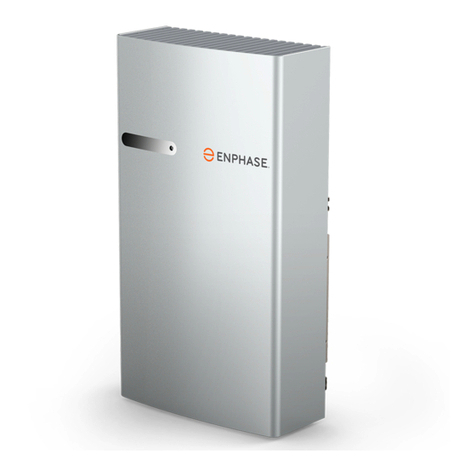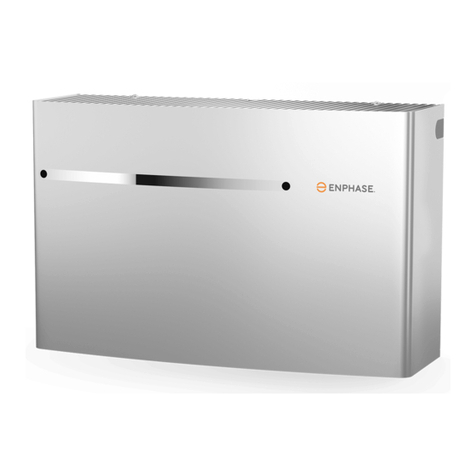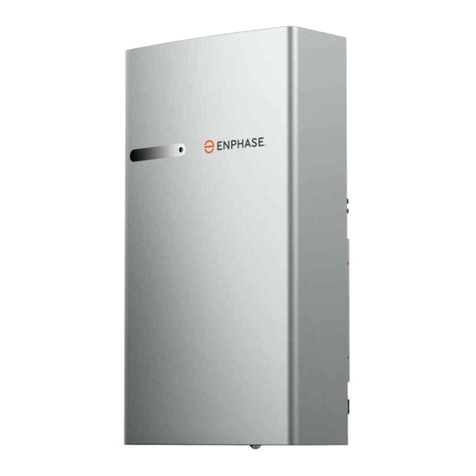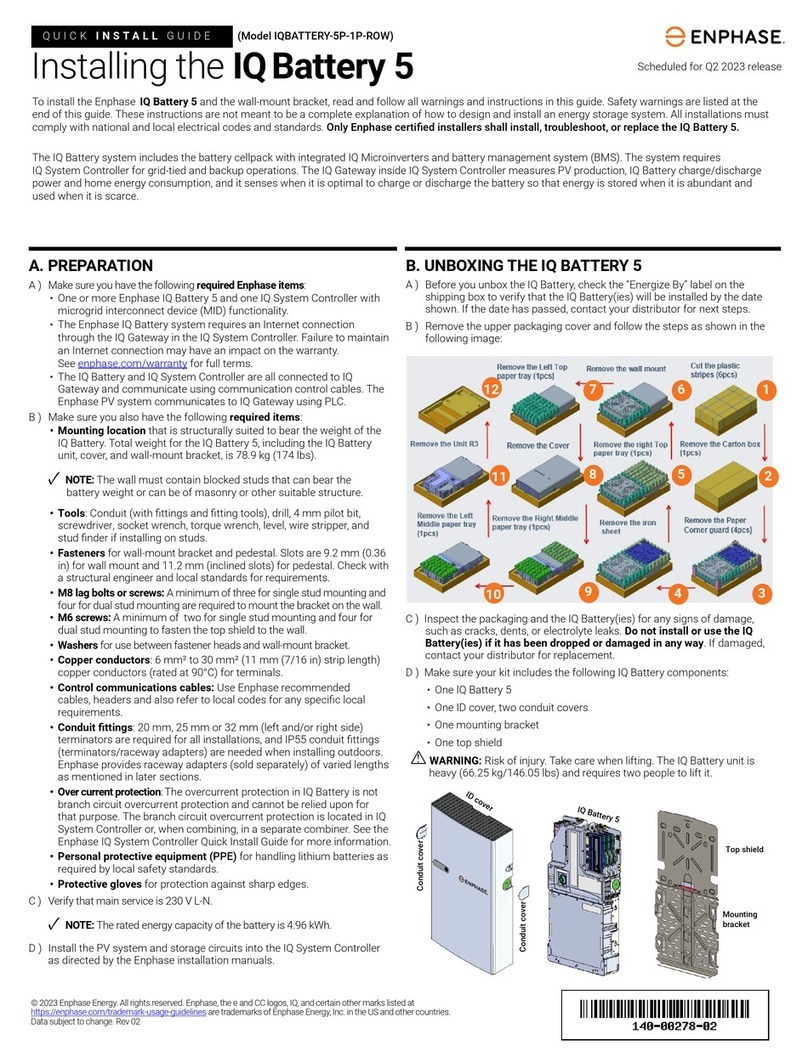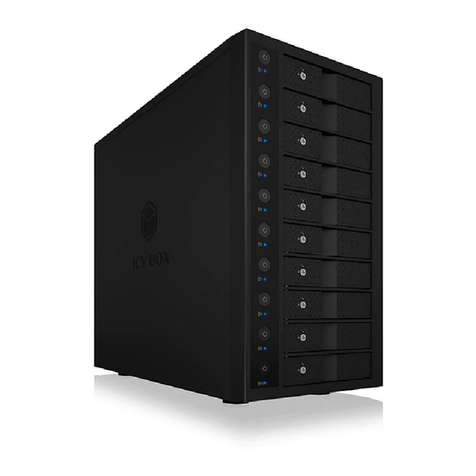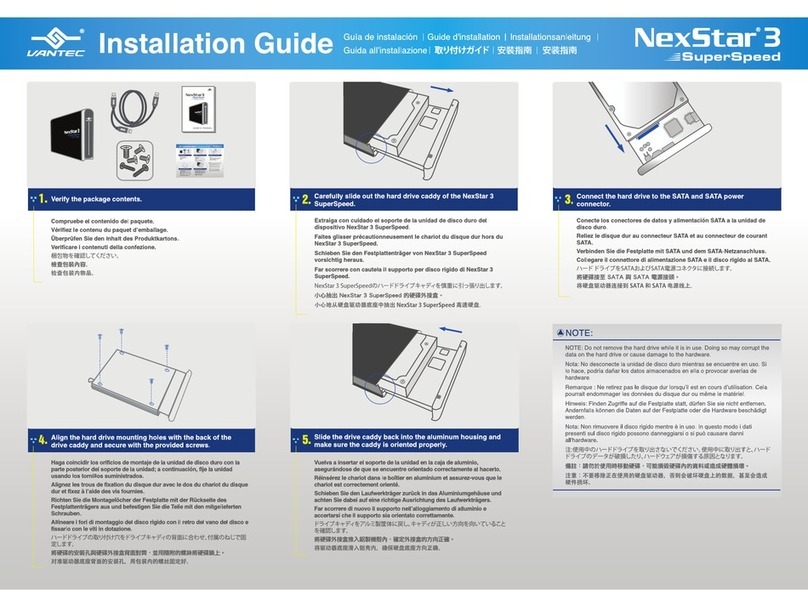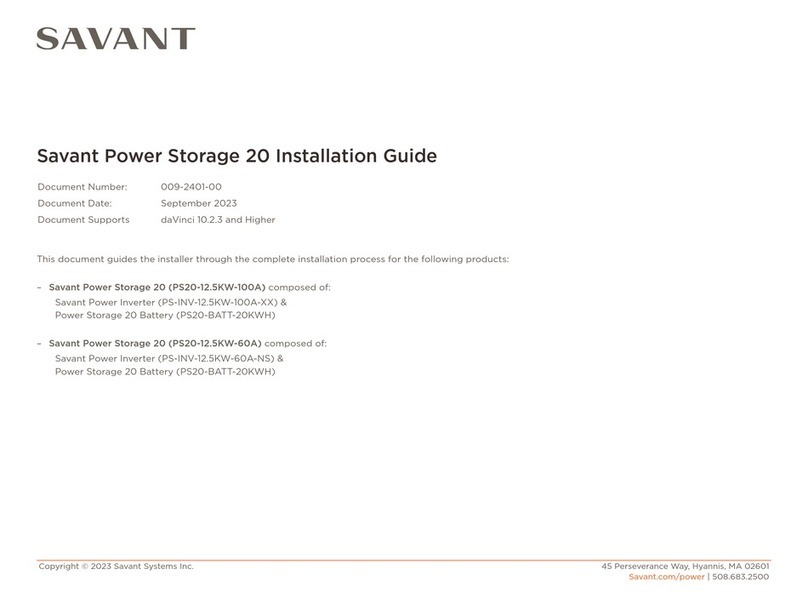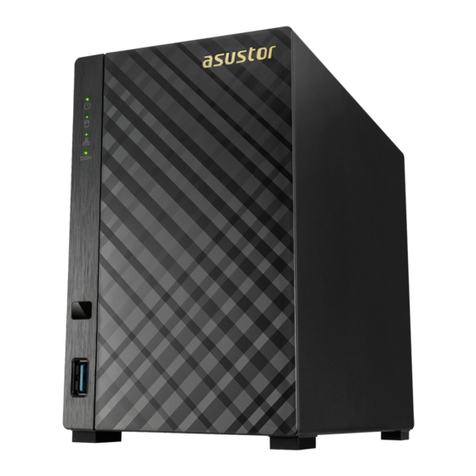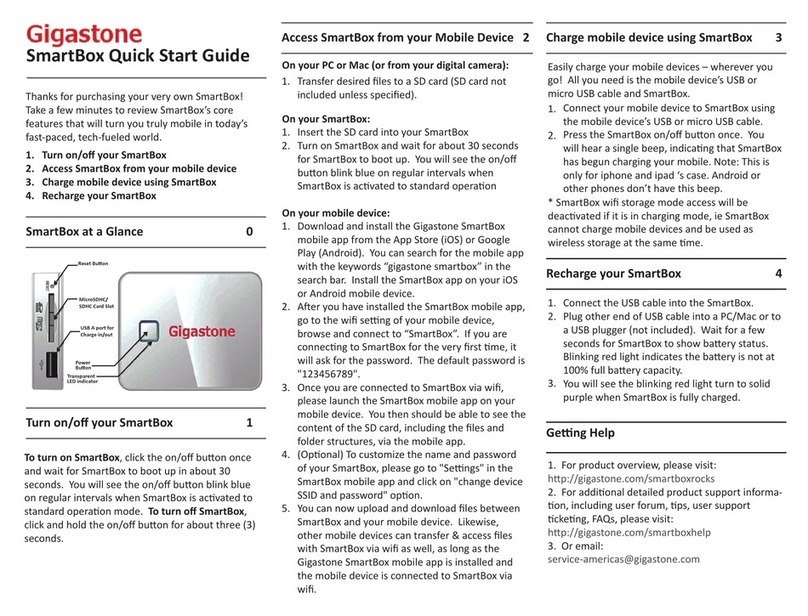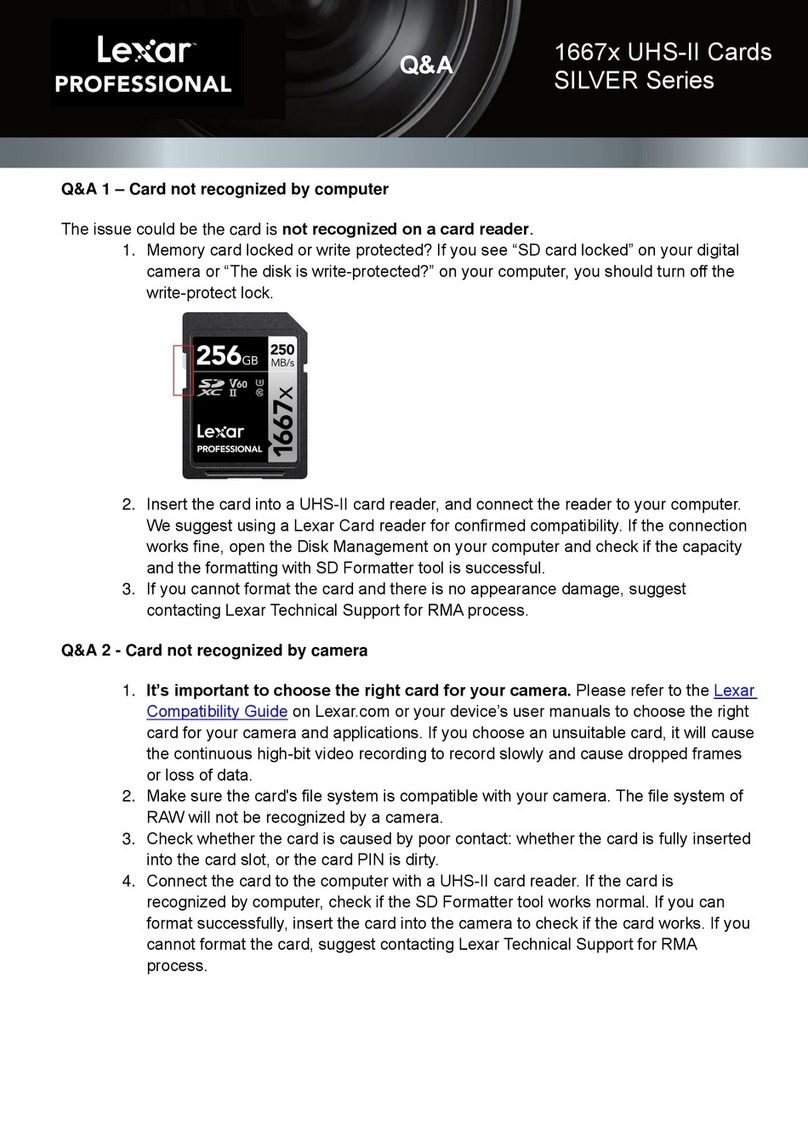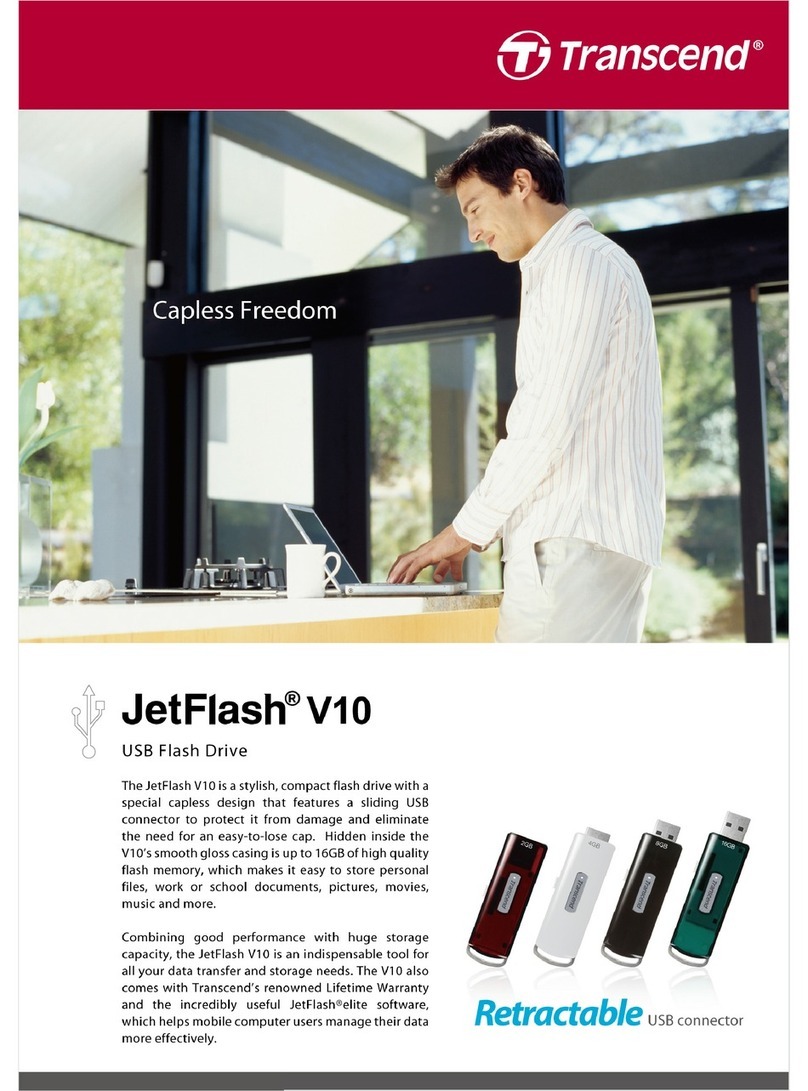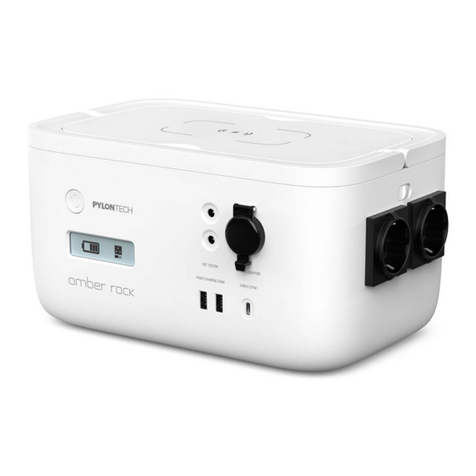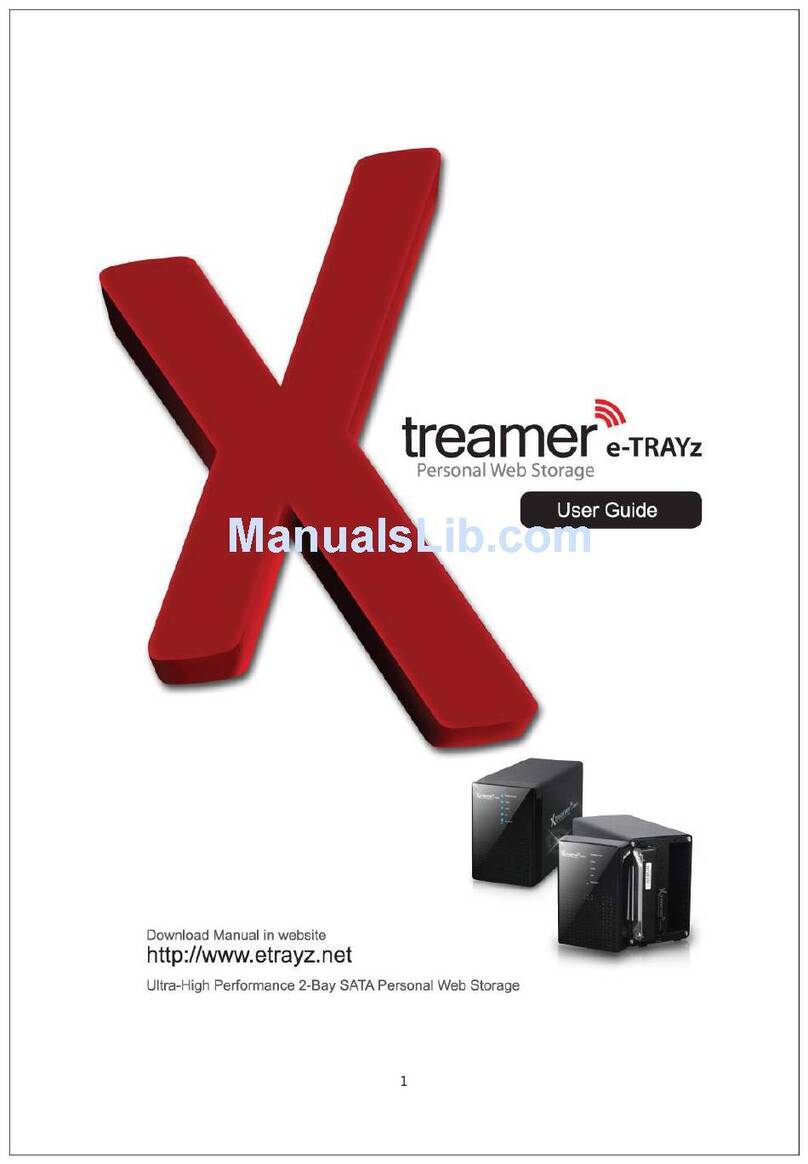enphase ENCHARGE-10-1P-NA User manual

QUICK INSTALL GUIDE (Models ENCHARGE-3-1P-NA and ENCHARGE-10-1P-NA)
Install the Enphase Encharge Storage System
To install the Enphase Encharge 3™ or Encharge 10™ and the Enphase Wall-Mount Bracket, read and follow all warnings and instructions in this guide. Safety
warnings are listed on the back of this guide. These instructions are not meant to be a complete explanation of how to design and install an energy storage
system. All installations must comply with national and local electrical codes and standards. Only qualied electricians shall install, troubleshoot, or replace
the Encharge 3 or Encharge 10.
The Enphase Storage System includes the Enphase Encharge Battery(ies) with integrated Enphase Microinverters™. The Enphase IQ Envoy™ gateway
measures PV production and home energy consumption. The Enphase Storage System senses when it is optimal to charge or discharge the battery so that
energy is stored when it is abundant and used when scarce. Encharge storage systems are capable of providing backup power when Enphase Enpower™ is
installed at the site.
Five unique installation scenari-
os are shown:
Whole home backup with Enpower
as service entrance and PV combiner
connected to Enpower. This is the
preferred conguration for back up
of the entire main load panel. This
conguration supports up to an 80A
breaker for the PV circuit and an 80A
breaker for battery storage.
Whole home backup with Enpower
as service entrance and PV combiner
connected to main load panel. This is
the preferred conguration when you
back up the entire main load panel, and
the size of the PV combiner circuit is
more than 80A. In this conguration, the
PV combiner circuit connection space
in Enpower is left vacant. When existing
PV combiner circuits are connected to
the main load panel, and you want to add
battery storage to the system, you can
keep the PV combiner connected to the
main load panel and connect only the
battery storage system to Enpower.
Partial home backup with main load
panel as service entrance and PV
combiner connected to Enpower.
When PV circuits breaker size is
less than 80A, this is the preferred
conguration for partial home backup
with sub-panel.

PREPARATION
A ) Inspect the packaging and the Encharge Battery(ies) for damage, such
as cracks, dents, or leaking electrolyte. Do not install or use the Encharge
Battery(ies) if it has been damaged in any way. If damaged, contact your
distributor for replacement.
B ) Ensure that your kit includes the following Encharge components:
• The Encharge 10 includes three batteries and two interunit raceways,
an Encharge 10 triple-width cover, and a triple-width mounting bracket.
• The Encharge 3 includes one battery, and single-width cover with
mounting bracket.
NOTE: Check the “Must Energize By” label on the shipping box to verify
that the Encharge Battery(ies) will be installed by the date shown. If the
date has passed, contact your distributor for replacement.
* WARNING: Risk of injury. Take care when lifting. The Encharge
Battery unit is heavy (47 kg/ 104 lbs) and requires two persons to lift.
C ) Ensure you have the following required Enphase items for backup systems:
• An Enphase Enpower smart switch with microgrid interconnect device
(MID) functionality and an Enphase IQ Combiner.
• The Enphase Encharge system requires an Internet connection
through the IQ Envoy in the IQ Combiner. Failure to maintain an
Internet connection may have an impact on the warranty. See
enphase.com/warranty for full terms.
• Wireless USB Adapter (COMMS-KIT-01) to be installed at Envoy for
communications with Encharge and Enpower. Includes USB cable for
connection to IQ Envoy / IQ Combiner and allows redundant wireless
communication with Encharge and Enpower.
D ) Make sure you also have the following required items:
• Mounting location that is structurally suited to bearing the weight of
the Encharge Battery(ies). Total weight for the Encharge 3 is 53 kg
(117 lbs), while the three battery units in the Encharge 10 add up to
157 kg (346 lbs). The wall must contain blocked studs that can bear
the battery weight or can be of masonry or other suitable structure.
• Tools: conduit (with ttings and tting tools), drill, 5/32 inch pilot bit
(or metric equivalent), screwdriver, socket wrench, torque wrench,
level, wire stripper, and stud nder if installing on studs.
• Fasteners for wall mount bracket. Check with a structural engineer and
local standards for requirements.:
Three #8 lag bolts or screws, 7.6 cm (3 inches) long (depending on
attachment wall), for each single-wide wall-mount bracket.
Nine #8 lag bolts or screws, 7.6 cm (3 inches) long (depending on
attachment wall), for each triple-wide wall-mount bracket.
• Washers for use between fastener heads and wall-mount bracket.
• Copper conductors: No. 12 - 8 AWG (11mm/7/16 inch strip length)
copper conductors (rated at 75° C or 90° C) for terminals.
• Conduit ttings: 3/4 inch (left side) and 1/2 inch (right side) hubs are
required for all installations, and NEMA Type 3 conduit ttings (hubs)
are needed when installing out of doors (one for each used conduit
opening). Also needed are conduit plugs to close unused conduit
openings and conduit grounding nuts.
• Over current protection: The overcurrent protection in Encharge is not branch
circuit overcurrent protection and cannot be relied upon for that purpose.
The branch circuit overcurrent protection is located in Enpower or, when
combining , in a separate combiner. See the Enphase Enpower Quick Install
Guide for more information.
• Personal protective equipment (PPE) for handling lithium batteries as
required by local safety standards.
E ) Verify that main service is 120/240 VAC, and not 208/120 VAC. Encharge
batteries cannot be installed where L1 to L2 measures 208 VAC.
F ) Install the PV system and the IQ Combiner as directed by the Enphase
installation manuals.
G ) To record the installation of the Encharge Battery(ies), scan or remove the
serial number label for each battery and add it to the respective location
on a paper installation map. You will scan this map later using Enphase
Installer Toolkit™ and your mobile device. You can nd an example
installation map at the back of any Enphase Microinverter manual.
Self consumption, no Enpower smart
switch. The preferred conguration
when adding battery storage and PV
for self-consumption in a grid-tied
application with no option for backup
during outages. PV and Encharge will
not operate when the grid is unavailable.
Partial home backup with main
load panel as service entrance
and PV combiner connected to
sub-panel. This is the preferred
connection conguration for partial
home backup using a subpanel
when the PV circuit breaker size is
more than 80A. The space available
in Enpower for combiner (solar)
connection is left vacant.

INSTALLATION
Plan a location for the Encharge batteries
The Encharge housing is NEMA type 3R and can be installed indoors or out-
doors. The terminal blocks accepts copper conductors of No. 12 - 8 AWG.
A ) Following local standards, choose a well-ventilated location where
the ambient temperature and humidity are within -15° C to 55° C (-5°
F to 131° F) and 5% to 100% RH, non-condensing, preferably out of
direct sunlight.
B ) Ensure that the mounting location can sustain the weight of the
Encharge batteries and mounting bracket. Total weight for the
Encharge 3 is 53 kg (117 lbs), while the three battery units in the
Encharge 10 add up to 157 kg (346 lbs).
*WARNING: The installer should install blocking between studs
to ensure that no single stud carries the entire weight load of the
Encharge batteries.
C ) Plan the mounting location to be at least 30cm (one foot) off the
ground and 30cm (one foot) from the ceiling. Keep the Encharge
away from falling or moving objects, including motor vehicles.
*WARNING: If mounted in the path of a motor vehicle, we
recommend a mounting height that is 91 cm (36-inch) minimum
above the oor.
D ) Ensure that there are no pipes or electrical wires where you plan to
drill.
E ) Plan to maintain at least three feet of clearance in front of each En-
charge. Allow enough clearance on top and sides of the Encharge
so that the vents on the cover are not blocked.
F ) Consider the dimensions of the Encharge batteries, easy access,
height, and length of cable when selecting the location.
G ) Select a location where you can interconnect to the Enphase
Enpower MID.
H ) Follow all local standards.
J ) Review your external conduit plan to determine to which side of the
eld wiring compartment you will connect conduit.
K ) Up to two Encharge 10 (or six Encharge 3) units can be daisy
chained on one circuit. For installations with more than this number
of units, there must be a separate load center, subpanel, or circuit
combiner with over current protection to combine the daisy chained
circuits, and you must run only one circuit for all the Encharge
units to the Enpower (or to Enphase AC Combiner for grid-tied-only
installations). You must select proper conductors and AC discon-
nects for these circuits according to local codes, standards, and
other applicable requirements. Enpower supports up to a maximum
of 80 A breaker for Encharge connection circuit.
The subpanel could be a small, two circuit box with circuit breakers
(the drawing only shows switches). The circuit breakers in the box
would have to be suitable for back-feeding, per NEC 408.36(D).
Select the right size subpanel and breakers based on the number of
Encharge units being installed. If there are only three Encharge 10s,
for example, then you can use a box with current rating less than
80A.
To do this, you must purchase an off-the-shelf subpanel and install
as shown in the following image:
1Install the AC disconnect
Following all local codes and standards:
A ) Install an AC disconnect that can break the maximum rated current
of the branch circuit under load. The AC disconnect must be
installed in line-of-sight of Encharge, per NEC 706.7(A).
B ) Each Encharge unit is suitable for use with up to No. 8 AWG wires
on a maximum 40 A branch circuit. If more than 32 A of Encharge
batteries (corresponding to a 40 A branch circuit) are installed, a
separate subpanel must be installed between the Encharge units
and Enpower to combine the Enpower circuits together. All circuit
breakers in the subpanel must be suitable for back-feeding, per NEC
408.36(D).
C ) Verify that AC voltage at the site is within range: single-phase L1 to L2
voltage must measure between 211 and 264 VAC, while L-N should
measure between 106 and 132 VAC.
2
Prepare to install the wall-mount bracket
A ) Make sure that the planned position for the wall-mount bracket
meets clearance requirements as shown. The image depicts a
single bracket, but clearances and requirements are the same for
the triple-width bracket.
B ) Ensure that the mounting location can sustain the weight of the
Encharge batteries and mounting bracket. Total weight for the
Encharge 3 is 53 kg (117 lbs), while the three battery units in the
Encharge 10 add up to 157 kg (346 lbs).
C ) Starting at installation position closest to the power source, mark a
level line on the wall as a guide.
* WARNING! Multiple risks. Make sure not to drill or attach into
electric wiring or pipes that are in the wall!
3
Minimum 30cm
(one foot) from
ground/next
surface below
Minimum 30cm
(one foot) from
ceiling/next
surface above
Blocking installed
between studs
Wood screw
7.6 cm (#10x3”)
Encharge Battery

Encharge 3 wall mount bracket
Bracket shelf
Mounting holes
Front view Angle view
Encharge 3 — single-width bracket
A ) Place the wall-mount bracket on the wall so that the mounting holes
in the middle of the bracket align with the center of the stud.
B ) Use a level to keep the bottom of the wall-mount bracket level.
C ) Use the screws (or masonry attachments if installing in masonry)
to attach the bracket using one screw and washer for each slot.
Tighten the top bracket screw to 2.0 Nm (17.7 lb-in).
D ) Verify that the wall-mount bracket is solidly attached to the wall.
* WARNING! Risk of injury and equipment damage. Do not mount
an Encharge 3 on a bracket that is not properly mounted.
E ) If installing additional batteries, install adjacent wall-mount brackets,
as needed. Be sure to align the mounting holes in the wall-mount
bracket to the center of the wall stud. You may install another row
of brackets above the one already installed. Maintain at least 15 cm
(six inches) vertical clearance between rows, and ensure that the
wall can support the structural load (weight) of the installation.
4
Install the Encharge 3 (single width) or Encharge 10 (triple width) wall mount bracket
Follow the instruction below for the bracket you are installing.
Encharge 10 — triple-width bracket
A ) Place the wall-mount bracket on the wall so that the mounting
holes in the middle of the bracket align with the center of the
stud, and the mounting holes on the left and right align with the
adjacent studs.
B ) Use a level to keep the bottom of the wall-mount bracket level.
C ) Use the screws (or masonry attachments if installing in masonry)
to attach the bracket using one screw and washer for each slot.
Use screws in each section of the mounting bracket to support
the three Encharge battery units. There is an array of slots so that
you can choose those that allow you to mount the bracket on
studs. Tighten the top bracket screw to 2.0 Nm (17.7 lb-in).
D ) Verify that the wall-mount bracket is solidly attached to the wall.
* WARNING! Risk of injury and equipment damage. Do not
mount Encharge 10 batteries on a bracket that is not properly
mounted.
Encharge 10 wall mount bracket
Bracket shelf
Mounting holes
Front view
Angle view

Mount the Encharge Battery(ies) on the wall
* WARNING: Risk of injury. Take care when lifting.
Each Encharge Battery is heavy (47 kg/ 104 lbs) and requires two
persons to lift.
* WARNING! Risk of injury and equipment damage. Avoid dropping
the Encharge Battery(ies). Doing so may create a hazard, cause seri-
ous injury, and/or damage the equipment.
* WARNING! Risk of injury and equipment damage. Protect the
Encharge Battery(ies) from impact damage and improper use.
A ) Take the Encharge battery unit from the packaging and place it right
side up on a at surface.
B ) Begin by installing the Encharge battery unit located closest to the
main supply. Supporting the Encharge battery unit from underneath
the unit, lift the Encharge battery unit, hold it at an angle so the top of
the Encharge battery unit sets into the top of the wall-mount bracket.
C ) Once the top of the battery is engaged with the top tabs of the wall-
mount bracket, keep the battery vertical, make sure the battery is ush
against the bracket, and lower the battery down until fully seated on
the wall-mount bracket shelf.
D ) Attach the battery to the mounting bracket aligning the screw hole at
the top of the battery with the screw hole at the top of the bracket.
* WARNING! Risk of injury and equipment damage. Do not release
the Encharge battery unit until you ensure that the Encharge battery
unit is fully seated in the wall-mount bracket shelf.
5
Top screw hole
DC Switch
Scannable/removable
serial number label

Install conduit and eld wiring
+ DANGER! Risk of electric shock. The DC switch must be in the
Locked position before performing this step.
A ) Remove the sealing plug for entry into the eld wiring compartment.
If installing only one battery or when installing the last battery in the
array, seal up the hole with the supplied sealing plug.
B ) Size the conductors (Lines and Ground) to account for voltage rise
and to conform to the tables below. Design for a voltage rise total of
less than 2%. Encharge can use any circuit breaker size between 20 A
and 40 A. Breaker rating and wire size are installation dependent.
Number of
Encharge 3
Batteries
Current (A) Minimum Wire
Size (AWG)
Breaker Handle
Rating (A)
1 5.3 14 10
210.7 14 15
3 16.0 12 20
421.3 10 30
527.7 8 35
632.0 8 40
Number of
Encharge 10
Batteries
Current (A) Minimum Wire
Size (AWG)
Breaker Handle
Rating (A)
1 16.0 12 20
2 32.0 8 40
+ DANGER! Risk of electric shock. Check that the dedicated circuit
breaker protecting the branch where the Encharge Battery(ies) will
be connected is turned off before wiring.
* WARNING! Risk of equipment damage. The DC switch must be
OFF before installing, otherwise Encharge will try to form a grid.
C ) Use a Phillips screw driver to loosen the screws securing the eld wiring
compartment cover and remove the cover. Keep the cover handy as you
will need it later.
D ) If installing an Encharge 10, install the interunit raceways. The left-
side and right-side conduit openings are different diameters, so you
must install the raceway in the proper direction.
• Face the fronts of the batteries, and insert the raceway through
the right-hand unit’s left-side conduit opening from within the eld
wiring compartment, with the arm of the raceway pointing up.
• Push the raceway through the right-hand unit’s
left-side conduit opening and into the left-side
unit’s right-side conduit, opening until the two
snap features on the raceway engage the
left-side unit’s enclosure.
• Once fully inserted, rotate the “arm” toward you
until it stops.
• The left-side conduit opening of each battery unit has a at surface,
without additional features. The larger seal (green) on the raceway
mates with this opening. The right-side conduit opening has a
groove around the hole to t the O-ring (red) of the raceway. Make
sure that the O-ring is captured in the groove between the Encharge
enclosure and the raceway ange adjacent to the O-ring.
6 Install conduit and eld wiring, continued
E ) Using the conductors and suitable conduits, connect the AC discon-
nect and the rst adjacent Encharge Battery. Use the conduit openings
provided to connect the conduit and pass the wires through them.
Note that if an Enphase Enpower is in line-of-sight, the breaker can
service as a disconnect.
* WARNING! Risk of equipment damage. Do not modify or rewire
the pre-installed wiring or bonding connections in the eld wiring
compartment.
* WARNING! Risk of equipment damage. Always connect to two
Lines (active) and one ground.
F ) Connect each wire in the eld wiring compartment to its correspond-
ing conductor (Lines and Ground). Each terminal accepts two 12-8
AWG conductors (11mm/7/16 inch strip length). Tighten to 14 in lb.
G ) If installing an Encharge 10, route the wires from the rst Encharge
Battery to the adjacent Encharge Battery through the interunit
raceway. There are two positions for each line and for ground in the
terminal block to allow for daisy-chaining.
* WARNING! Risk of equipment damage. Do not daisy chain more
than six total Encharge 3 or two Encharge 10 on a single branch
circuit.
H ) After all wires in the eld wiring compartment are connected and
secured, check that there are no exposed conductors.
I ) If connecting additional Encharge Batteries, use another conduit and
another set of wires to connect between eld wiring compartments.
J ) Gently arrange all the wires and connectors inside the eld wiring
compartment.
K ) Plug any unused conduit openings before proceeding.
L ) Replace the eld wiring compartment cover. Use a cross-head screw
driver to tighten the cover screws to 2.3Nn (20.3 Ib-in).
* WARNING! Risk of equipment damage. Ensure that no wires are
pinched before replacing the cover.
+ DANGER! Risk of electric shock. The system is not ready to be
energized! Do not close the circuit breaker or turn on the DC switch.
6
KEY:
1. AC (conduit opening). Used for interunit raceway when an
adjacent battery is installed.
2. AC (conduit opening)
3. Terminal for L1 in from conduit opening
4. Terminal for ground in from conduit opening
5. Terminal for L2 in from conduit opening
2
1
3
4
5
Interunit
raceway
Correctly installed
interunit raceway

Cover and energize the system
*WARNING: Before energizing, make sure that ALL Encharge Batter-
ies in the system are properly installed and conductors terminated.
NOTE: Check the Cover Kit box for updates on cover installation
instructions.
A ) Check that the eld wiring compartment cover(s) for all Encharge
Batteries in the system are closed and secured.
*WARNING: Complete the Enphase Enpower and Enphase Combiner
installations before turning the DC switch(es) ON.
B ) Turn on the DC switches for the Encharge Batteries.
+DANGER: Risk of electric shock. AC voltage is present at the
output when the DC switch is on.
*WARNING: Branch circuit protection must be off before switching
DC power on or off.
+ WARNING! Risk of electric shock and equipment damage. If the DC
switch is ON, Encharge will try to form a grid.
C ) Place enclosure cover(s) over the battery(ies) as follows.
Encharge 3 (single-width battery cover)
• Pick up the Encharge 3 Battery cover, stand in front of the battery so
that the cover and battery are on a level, and slide the cover over the
battery so that the interior guides of the cover slide easily over the
guides on the battery unit.
• Check that the screw hole on top of the battery cover aligns with that
on the battery.
• Use the included screw to attach the cover to the battery. Tighten the
screw as needed.
Encharge 10 (triple-width battery cover)
• The Encharge 10 Battery cover in wide and may require two persons to
guide smoothly over the battery units.
• Pick up the Encharge 10 Battery cover, stand in front of the battery
so that the cover and battery are on a level, and slide the cover over
the battery so that the interior guides of the cover slide easily over the
guides on the battery units.
• Check that the screw holes on top of the battery cover align with those
on the batteries.
• Use the included screws to attach the cover to the batteries. Tighten
the screws as needed.
D ) Turn on the AC circuit feeding the Encharge Battery(ies).
E ) The Encharge Battery LED(s) should ash yellow for the duration of
the startup process. If the LED is not ashing yellow, see the following
section on Troubleshooting.
7
Encharge 10 - cover installed
Encharge 10 without cover
Use the Enphase Installer Toolkit to commission the Encharge
Battery(ies). Once connected to the Envoy, refer to the Installer Toolkit
help topics for more information.
After the IQ Envoy has detected the Encharge Battery(ies), the Encharge
LEDs operate as described in the following section.
CONFIGURE and ACTIVATE
OPERATION
aLED overview
The LED ashes yellow while each Encharge Battery boots up. If the
LED rapidly ashes green for more than two minutes, the battery is
in trickle charge mode and will remain so until it reaches a minimum
state of charge (up to 30 minutes). After the Encharge Battery is
booted up, the LED becomes blue or green depending on the charge
level. If the LED ashes yellow after one hour or changes to a ashing
red state, contact Enphase Customer Support at enphase.com/en-us/
support/contact.
State Description
Rapidly ashing yellow Starting up / Establishing communications
Red ashes in sequences of 2 Error. See “Troubleshooting”.
Solid yellow Not operating due to high temperature. See
“Troubleshooting”.
Solid blue or green Idle. Color transitions from blue to green as
state of charge increases. You can check
Enlighten for charge status.
Slowly ashing blue Discharging
Slowly ashing green Charging
Slowly ashing yellow Sleep mode activated
Off Not operating. See “Troubleshooting”.
bTroubleshooting
If the Encharge Battery(ies) are not operating correctly, perform the fol-
lowing steps. If the issue persists, contact Enphase Customer Support
at enphase.com/en-us/support/contact.
A ) If the Encharge Battery(ies) do not operate, check the temperature
in the room and increase cooling and/or ventilation as required.
Check that the front, top, and sides of the Encharge batteries have
at least 30 cm (one foot) of unobstructed clearance.
B ) If the Encharge LED is off, turn off the breaker for the branch
circuit, wait for at least one minute, and turn it back on.
NOTE: During a brownout or blackout, the Encharge powers down
automatically. This is normal. When power is restored, it automati-
cally starts up again.
C ) If you do not see Encharge information in Enlighten, check that the
IQ Envoy and the Internet connection are working.

Enphase Customer Support: enphase.com/en-us/support/contact
Safety and Advisory Symbols
+DANGER: This indicates a hazardous situation, which if not avoided, will
result in death or serious injury.
*WARNING: This indicates a situation where failure to follow instructions
may be a safety hazard or cause equipment malfunction. Use extreme
caution and follow instructions carefully.
✓NOTE: This indicates information particularly important for optimal system
operation. Follow instructions carefully.
Safety Instructions
+DANGER: Risk of electric shock. Risk of re. Only qualied electricians should
install, troubleshoot, orreplace the Encharge Battery(ies).
+DANGER: Risk of re or explosion. Only qualied personnel, using personal
protective equipment (PPE) should transport or handle the Encharge
Battery(ies).
+DANGER: Risk of explosion. Do not dispose of Encharge Battery(ies) in a re
or by burning. The Encharge Battery(ies) can explode.
+DANGER: Risk of re. During use, when stored, or during transport, keep the
Encharge Battery(ies) in an area that is well ventilated and protected from
the elements, where ambient temperature is between -20° C and 45° C (-4°
F and 113° F) , and where relative humidity is between 5 and 95 percent. Do
not install the Encharge Battery(ies) at elevations over 2500 m (8,200 feet)
above sea level.
+DANGER: Risk of re. If the Encharge Battery(ies) generate smoke, remove
AC power from the Enphase System and turn the DC connect switch to the
off position so that charging/discharging stops.
+DANGER: Risk of electric shock. Risk of re. Do not attempt to repair the
Encharge Battery(ies). DO NOT OPEN THE ENCLOSURE -- NO SERVICEABLE
PARTS. Tampering with or opening the Encharge Battery(ies) will void the
warranty. If the Encharge Battery(ies) fail, contact Enphase Customer Sup-
port for assistance at enphase.com/en-us/support/contact.
+DANGER: Risk of electric shock. Do not use Enphase equipment in a manner
not specied by the manufacturer. Doing so may cause death or injury to
persons, or damage to equipment.
+DANGER: Risk of electric shock. Do not install the Encharge Battery(ies)
without rst removing AC power from the photovoltaic system. Disconnect
the power coming from the photovoltaics before servicing or installing.
+DANGER: Risk of electric shock. Always de-energize the AC branch circuit
during an emergency and/or before servicing the Encharge Battery(ies).
Never disconnect the DC switch under load.
+DANGER: Risk of electric shock. Risk of high short-circuit current. Observe
the following precautions when working on batteries:
• Remove watches, rings, or other metal objects.
• Use tools with insulated handles.
• Wear insulating gloves and boots.
• Do not lay tools or metal parts on top of batteries.
+DANGER: Risk of electric shock. Risk of re. Do not work alone. Someone
should be in the range of your voice or close enough to come to your aid
when you work with or near electrical equipment.
+DANGER: Risk of re. Do not allow or place ammable, sparking, or explosive
items near the Encharge Battery(ies).
+DANGER: Risk of electric shock. In areas where ooding is possible, install
the Encharge Battery(ies) at a height that prevents water ingress.
+DANGER: Risk of electric shock. AC voltage is present at the output when the
DC switch is on.
+DANGER: Risk of electric shock. Branch circuit protection must be off before
switching DC power on or off.
+DANGER: Risk of electric shock. The DC switch must locked in the OFF
position for shipping and service.
*WARNING: Risks of electric shock, energy hazard, and chemical hazard. Do
not disassemble.
*WARNING: Risk of equipment damage. During use, storage, transport, or
installation, always keep the Encharge Battery(ies) in an upright position.
*WARNING: You must install the Encharge Battery(ies) only on a suitable wall
using an Enphase wall-mount bracket.
*WARNING: Before installing or using the Encharge Battery(ies), read all
instructions and cautionary markings in this guide and on the equipment.
*WARNING: Do not install or use the Encharge Battery(ies) if it has been
damaged in any way.
*WARNING: Do not exceed the maximum number (3) of Encharge Batteries in
a 20 A AC branch circuit.
*WARNING: Do not sit on, step on, place objects on, or insert objects into the
Encharge Battery(ies).
*WARNING: Do not place beverages or liquid containers on top of the Encharge
Battery(ies). Do not expose the Encharge Battery(ies) to liquids or ooding.
*WARNING: When placing the Encharge Battery(ies) in storage, ensure that
AC power is not present and that the DC switch is in the Locked position.
While in storage, damage to the battery can occur from over-discharge.
If the battery state of charge falls to 0%, the Encharge Battery(ies) can be
damaged or destroyed. Because of this, the Encharge Battery(ies) must only
be stored for a limited amount of time.
• The Encharge Battery(ies) must be installed and energized by the “Must
Energize By” date on the shipping box label.
• The Encharge Battery(ies) must have a charge state of no more than 30%
when placed in storage. To do this, the Encharge Battery(ies) must be placed
in Sleep Mode.
• If the Encharge Battery(ies) is already been installed, it must be placed
into Sleep Mode prior to uninstalling. A battery in Sleep Mode can be
stored a maximum of two months after being placed into Sleep Mode.
✓NOTE: Perform installation and wiring, including protection against lightning
and resulting voltage surge, in accordance with all applicable local electrical
codes and standards.
✓NOTE: Because Encharge Battery(ies) are grid forming, you must install
signage in accordance with NEC articles 705, 706, and 710.
✓NOTE: Using unapproved attachments or accessories could result in dam-
age or injury.
✓NOTE: Install properly rated over current protection as part of the system
installation.
✓NOTE: To ensure optimal reliability and to meet warranty requirements,
the Encharge Battery(ies) must be installed and/or stored according to the
instructions in this guide.
✓NOTE: The Encharge Battery(ies) are compatible only with the IQ Envoy
communications gateway properly tted with USB hub, USB radios, and
production and consumption CTs. The IQ Envoy is required for operation of
the Encharge Battery(ies). Earlier versions of the Enphase Envoy communi-
cations gateway are incompatible.
✓NOTE: The Enphase Encharge Battery(ies) are intended to operate with an
Internet connection. Failure to maintain an Internet connection may have
an impact on the warranty. See Limited Warranty for full terms and services
(enphase.com/warranty).
✓NOTE: When replacing Enphase Encharge Battery(ies), you must replace with
an Encharge Battery(ies) of the same type, with the same AC current rating.
✓NOTE: When stored, the Encharge Battery(ies) are not connected to the grid
and no automatic charge of the battery is possible.
✓NOTE: Properly mount the Encharge Battery(ies). Ensure that the mounting lo-
cation is structurally suited to bearing the weight of the Encharge Battery(ies).
✓NOTE: During use, storage, and transport, keep the Encharge Battery(ies):
• Properly ventilated
• Away from water, other liquids, heat, sparks, and direct sunlight
• Away from excessive dust, corrosive and explosive gases, and oil smoke
• Away from direct exposure to gas exhaust, such as from motor vehicles
• Free of vibrations
• Away from falling or moving objects, including motor vehicles. If mounted
in the path of a motor vehicle, we recommend a 91 cm (36-inch)
minimum mounting height
• At an elevation of lower than 2,500m (8,200 feet) above sea-level
• In a location compliant with re safety regulations
• In a location compliant with local building codes and standards
✓NOTE: Conditions for the Encharge installation site apply also to storage
conditions.
SAFETY
IMPORTANT SAFETY INSTRUCTIONS. SAVE THESE INSTRUCTIONS. This guide contains important instructions that you must follow during installation
and maintenance of the Enphase Encharge Battery(ies). Failing to follow any of these instructions may void the warranty (enphase.com/warranty).
In Case of Fire or Other Emergency
In all cases:
• If safe to do so, switch off the AC breaker for the Encharge Battery circuit,
and if an isolator switch is present, switch off the AC isolator for the
Encharge Battery circuit.
• Contact the re department or other required emergency response team.
• Evacuate the area.
In case of re:
• When safe, use a re extinguisher. Suitable types are A, B, and C dry chemical
re extinguishers. Additional extinguishing media include carbon dioxide, or
alcohol-resistant foams.
In case of ooding:
• Stay out of the water if any part of the Encharge Battery(ies) or wiring is
submerged.
• If possible, protect the system by nding and stopping the source of the
water, and pumping it away.
• If water has contacted the battery, call your installer to arrange a inspection.
If you are sure that water has never contacted the battery, let the area dry
completely before use.
In case of unusual noise, smell or smoke:
• Ensure nothing is in contact with the Encharge Battery(ies) or in the venting
area of the Encharge Battery(ies).
• Ventilate the room.
• Contact Enphase Customer Support at enphase.com/en-us/support/contact.
Safety Instructions, continued
© 2019 Enphase Energy. All rights reserved.
Environmental Protection
ELECTRONIC DEVICE: DO NOT THROW AWAY. Waste electrical
products should not be disposed of with household waste.
Proper disposal of batteries is required. Refer to your local
codes for disposal requirements.
This manual suits for next models
1
Table of contents
Other enphase Storage manuals
Popular Storage manuals by other brands
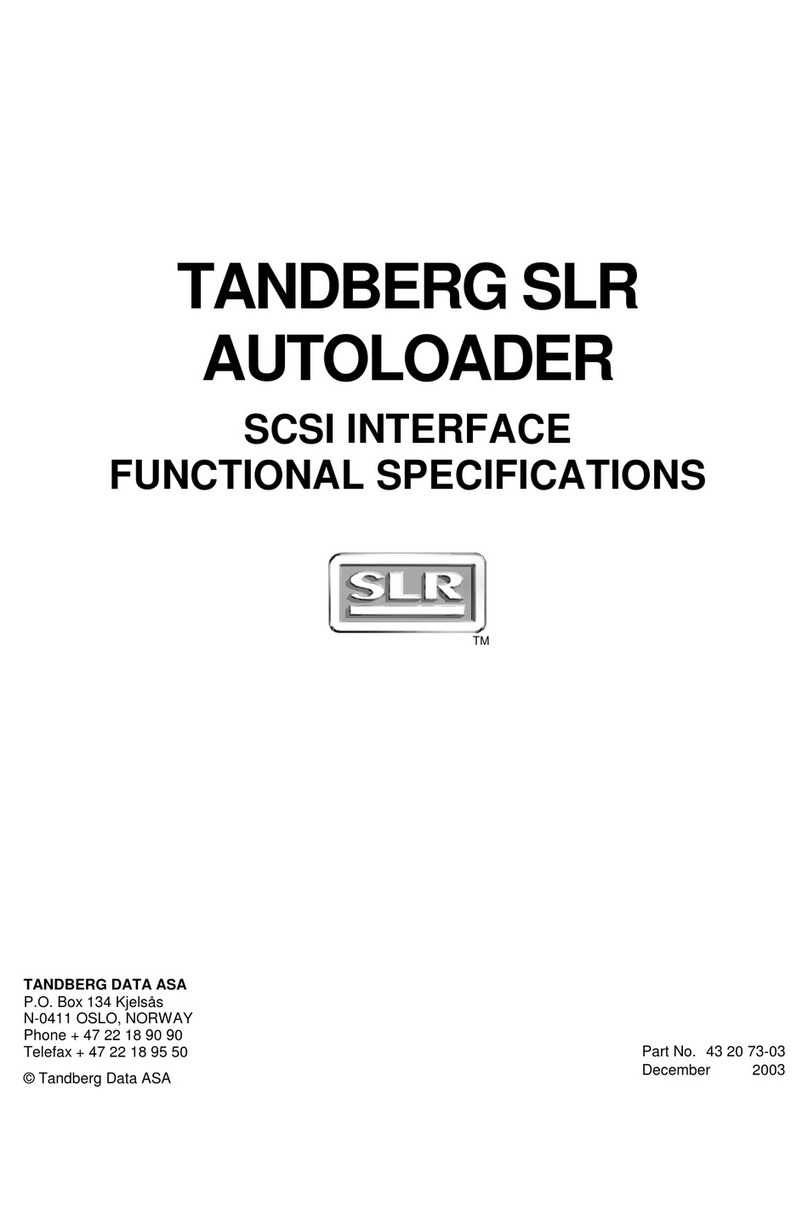
Tandberg Data
Tandberg Data SLR AUTOLOADER PROGRAMMER manual
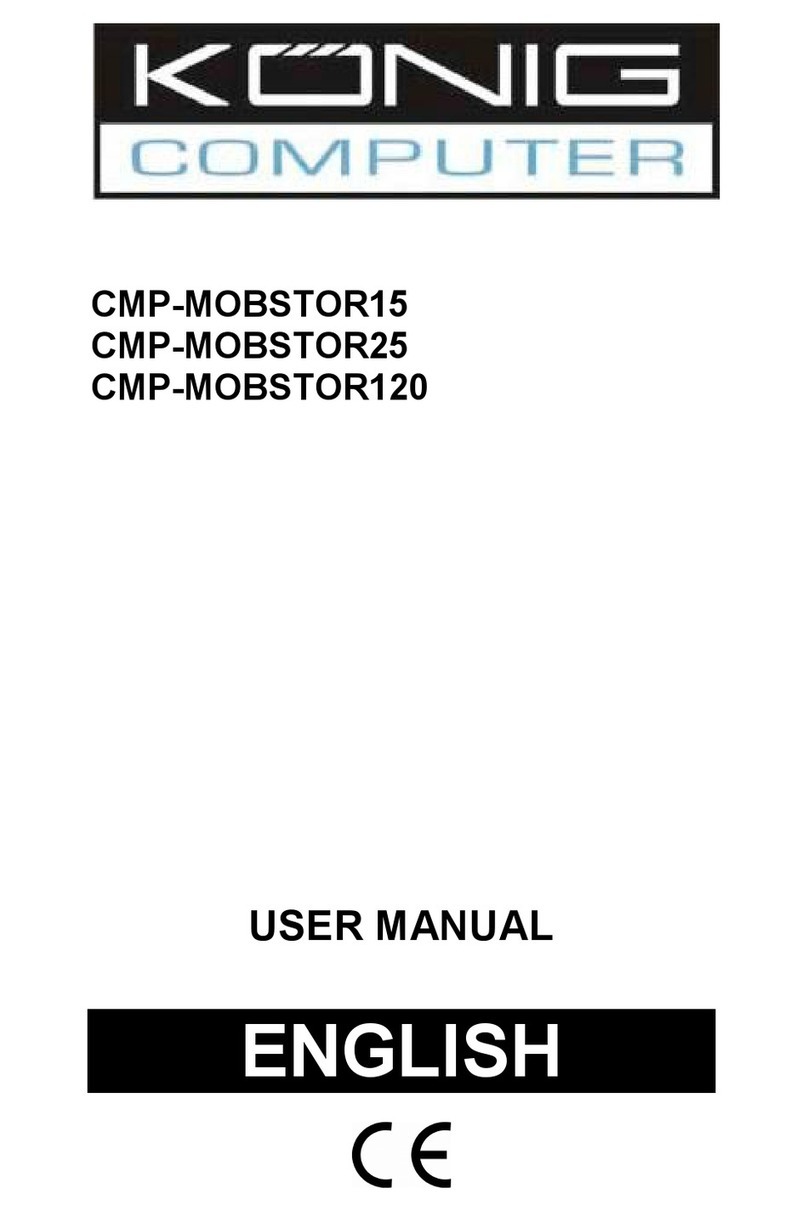
Konig
Konig CMP-MOBSTOR15 user manual
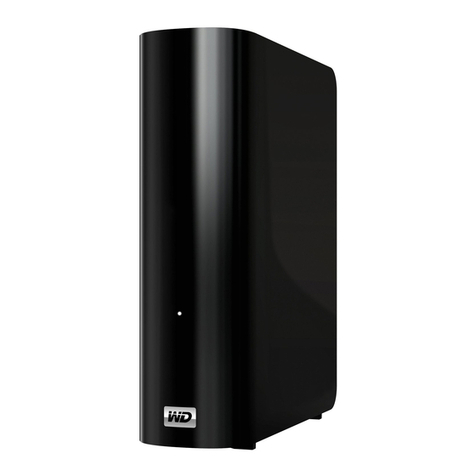
Western Digital
Western Digital My Book Mac Edition user manual
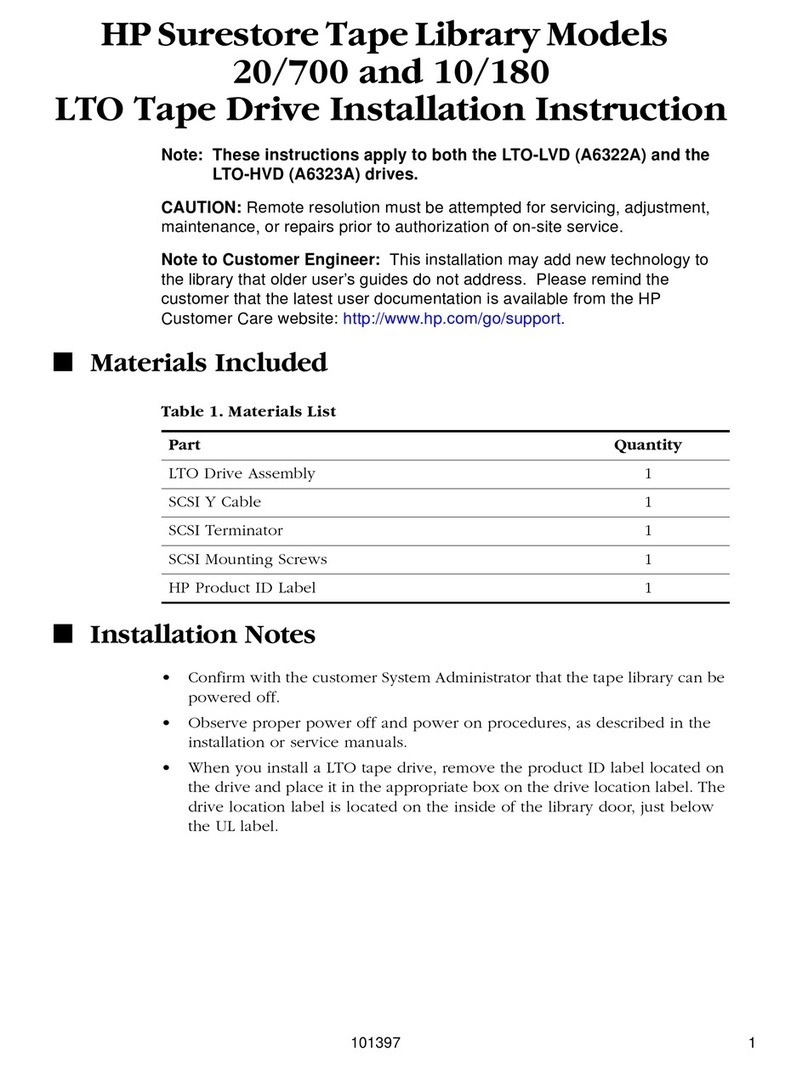
HP
HP Surestore Tape Library Model 10/180 Installation notes
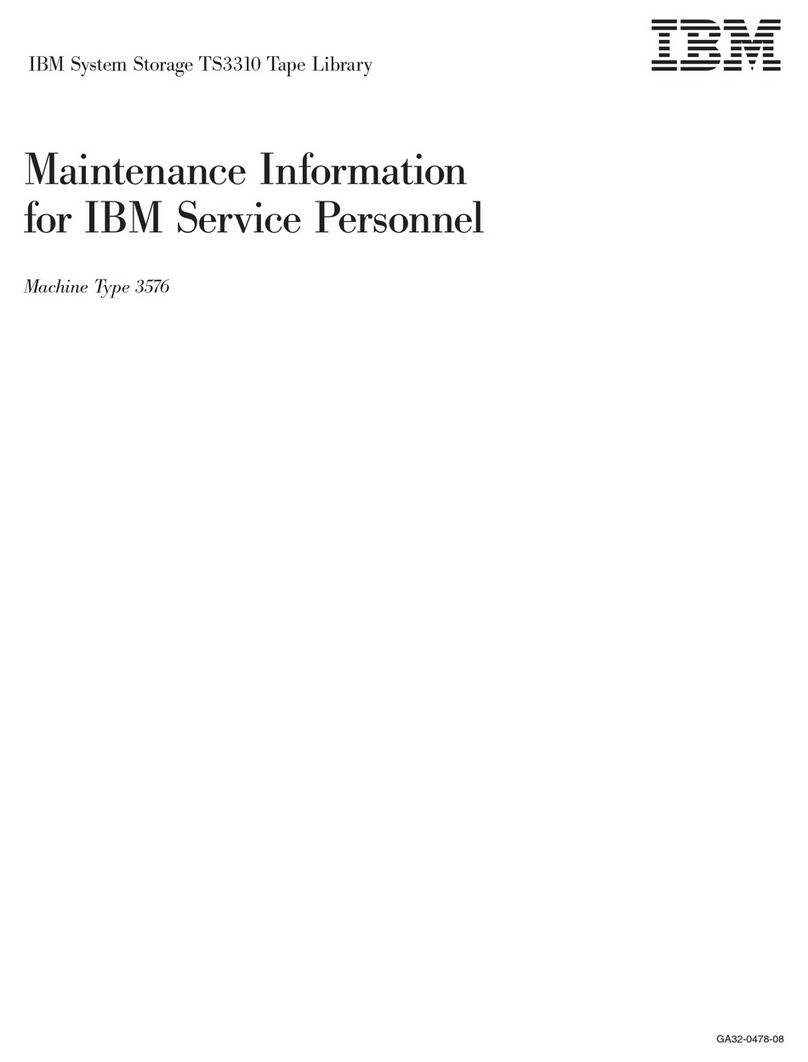
IBM
IBM System Storage TS3310 Maintenance information
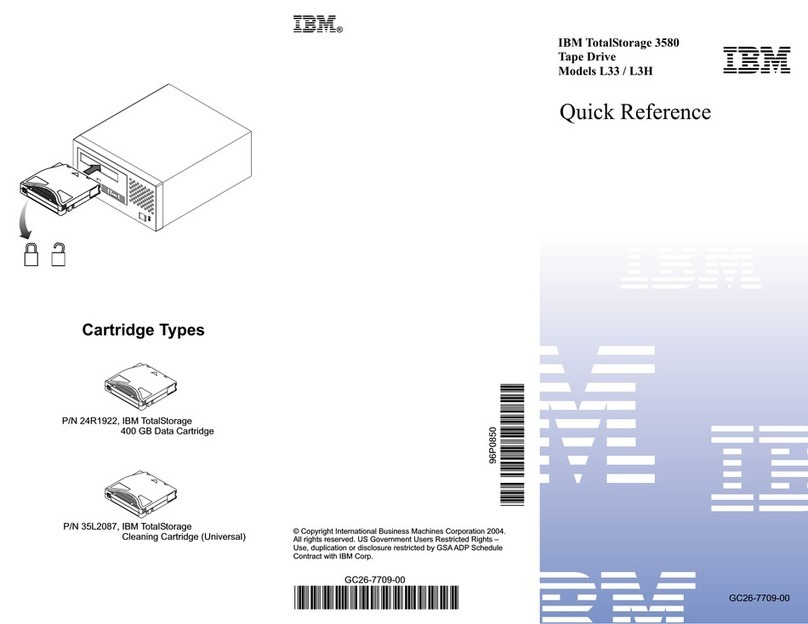
IBM
IBM TotalStorage 3580 L33 quick reference
